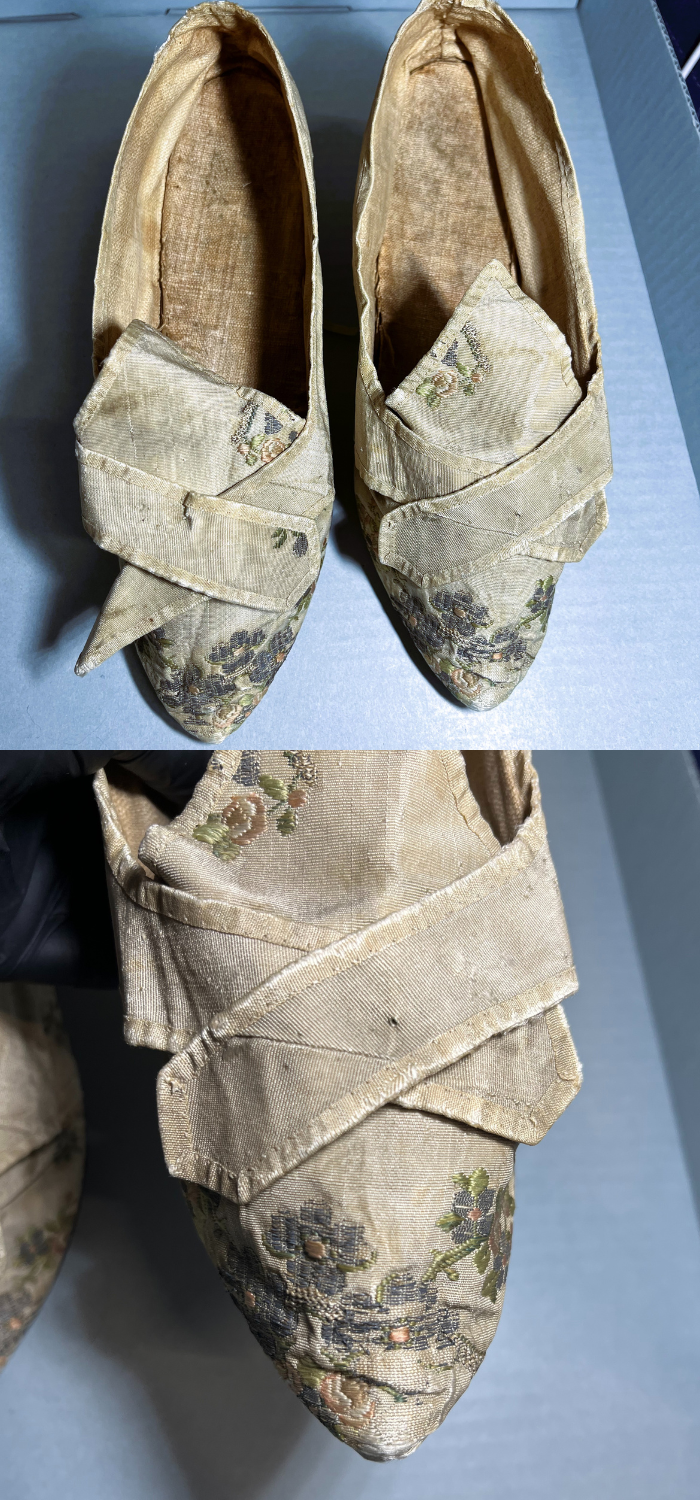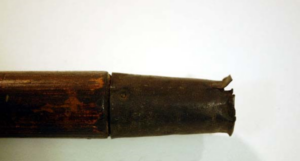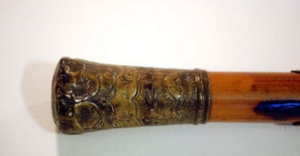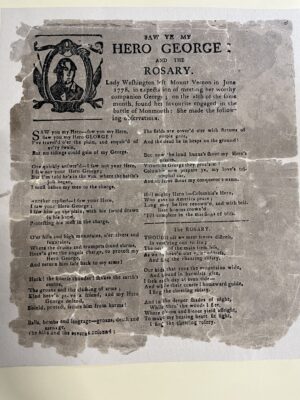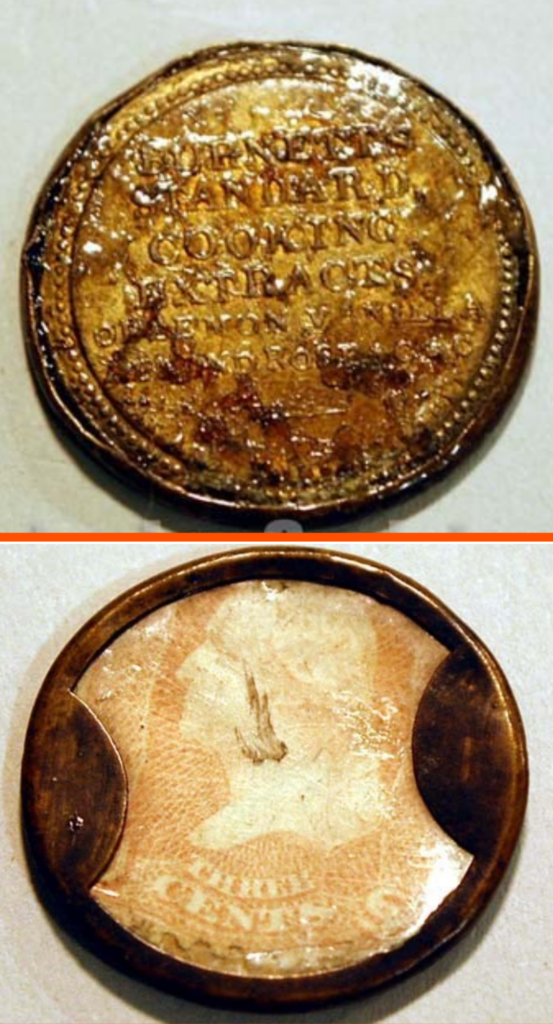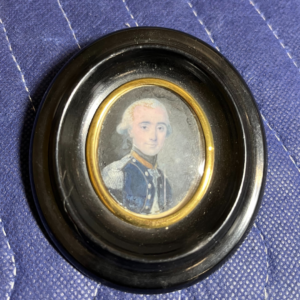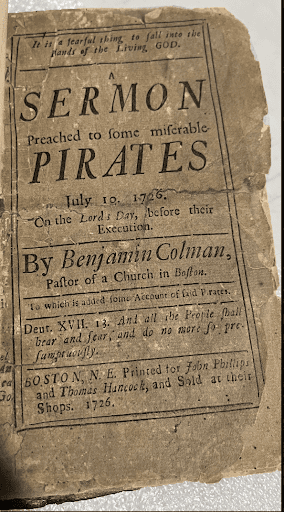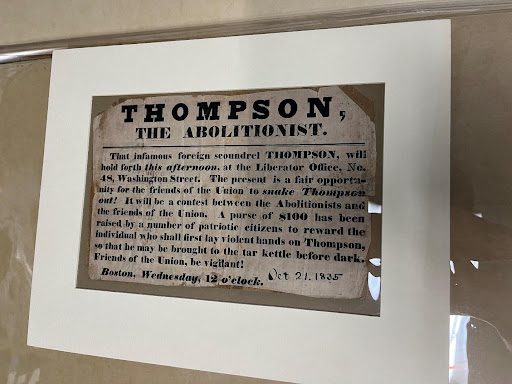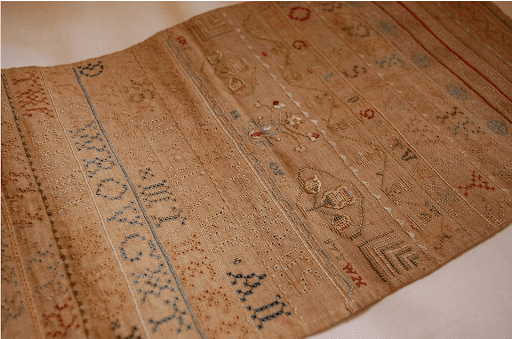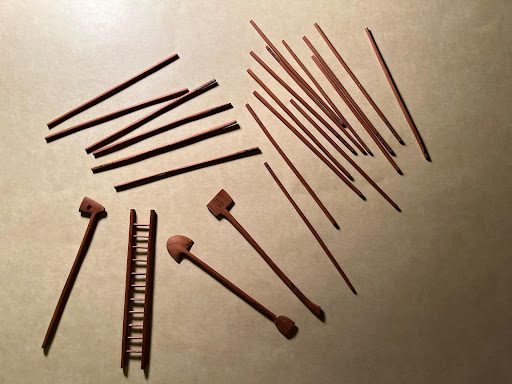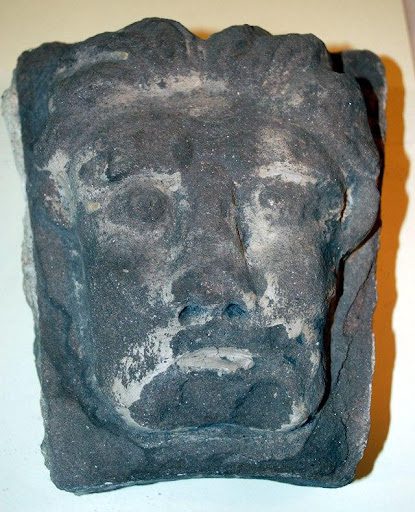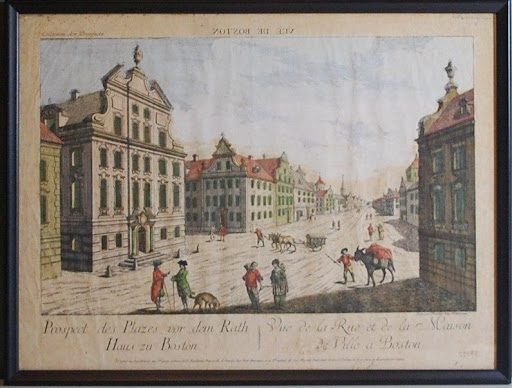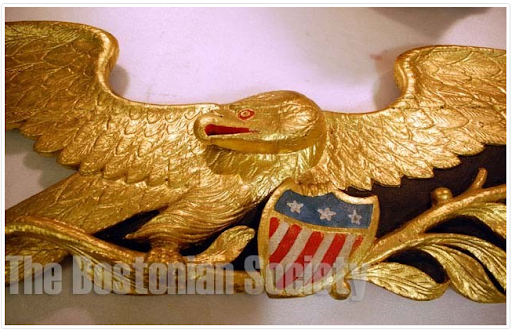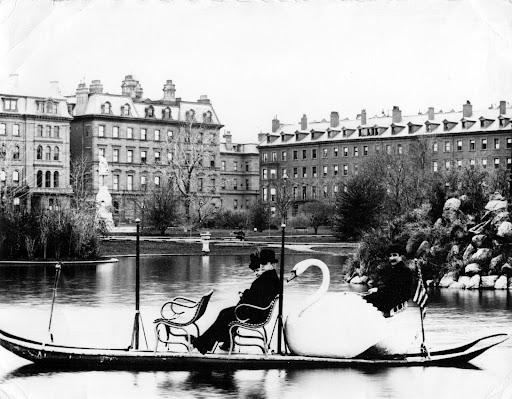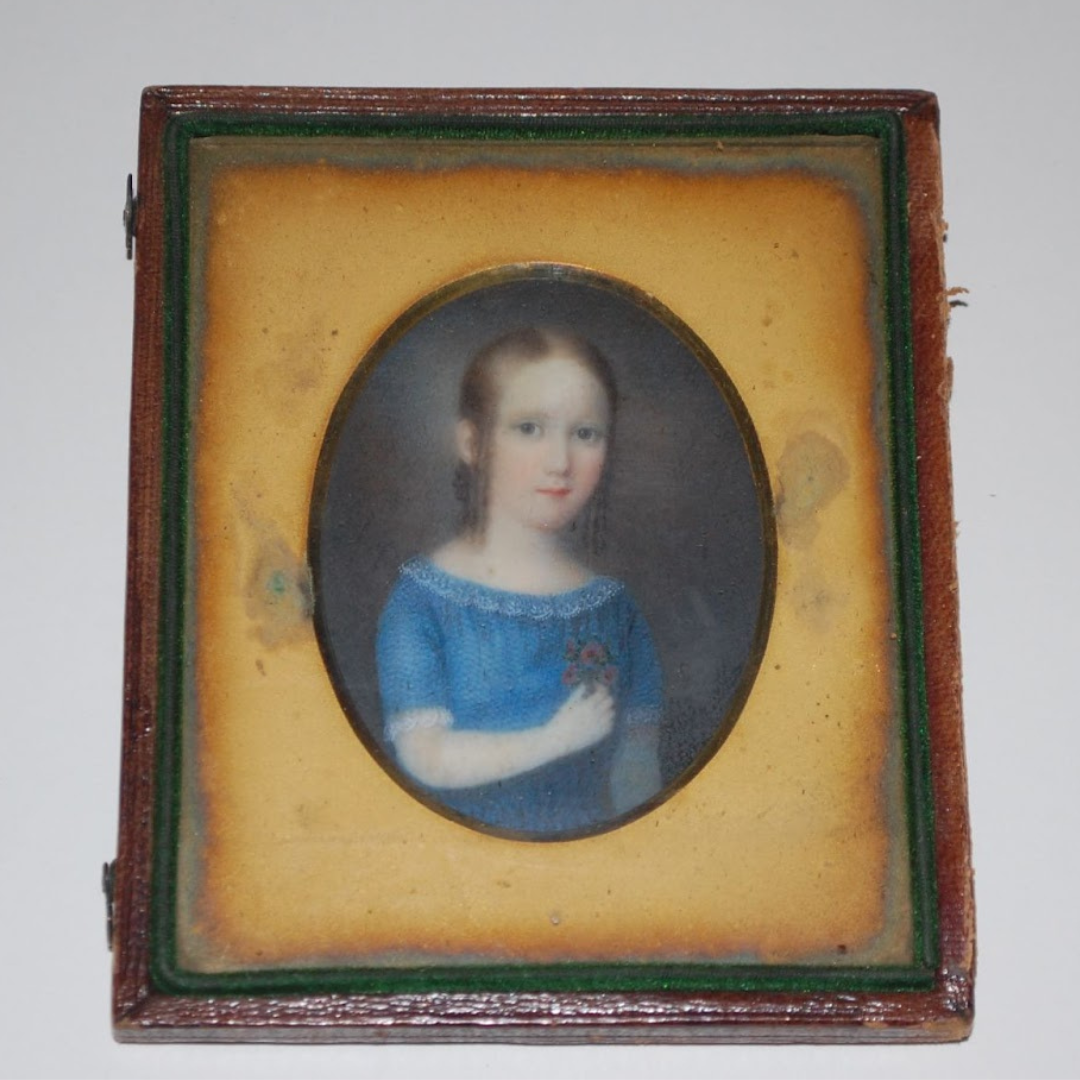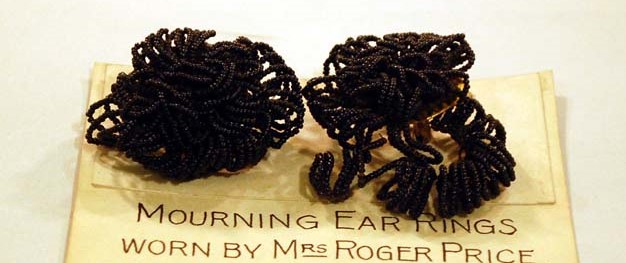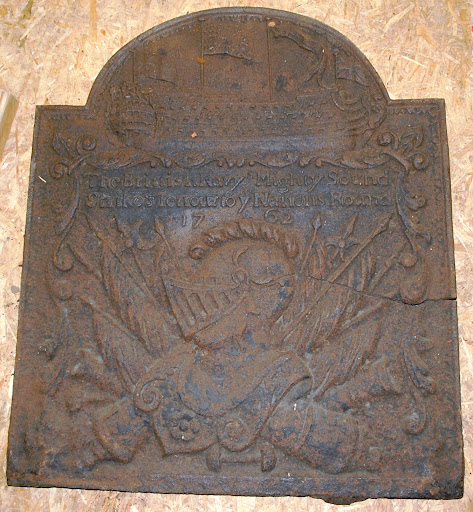Object of the Month
Fascinating treasures & unique artifacts
Explore Revolutionary Spaces' Object of the Month to learn more about our collection of objects, documents, maps, books, photographs, and more! Each month, we will highlight a unique object handpicked by Associate Director of Collections Lori Erickson Fidler. Discover some of the unique and interesting items from the past 400 years of regional and national history, spanning the seventeenth to the twentieth centuries.
Want to know our next object of the month? Sign up for our email list today!
Read more about the Object of the Month by selecting a month below. Click on the object to view an enlarged image.
2024 Objects of the Month
Eighteenth century
OSA #32
The work of merging the Old South Association and Bostonian Society collections has yielded a number of fascinating “discoveries,” as staff learn about objects previously unknown to us. One such item is this beautiful pair of eighteenth century women’s shoes. Lydia Remick Worster (1738-1820) wore the silk embroidered slippers at her 1760 wedding to John Sullivan. Sullivan would later become a distinguished Major General of the Continental Army. Born in Kittery, Maine, Lydia became a mother to six children, including George Sullivan, who would serve as a U.S. Congressman. The shoes do not have a label, but it is likely Lydia purchased them from a cordwainer (shoemaker) in London, as this style is similar to many imported into the colonies prior to the American Revolution.
c. 1733
1906.0024
Reverend Mather Byles (1706-1788) was a Boston clergyman known not only for his skill in liturgical writing, but also his quick wit and poetic satire. He served as minister of the Hollis Street Congregational Church and may have received this cane as a gift upon his appointment there in 1733. The cap features an image of a hound chasing a rabbit and an inscription that reads, “M. Byles ex dono D Johannis Fitch 1733” (“ex dono” is Latin and translates to “a gift from”). A lifelong Loyalist, Byles once said, “Which is better—to be ruled by one tyrant 3,000 miles away or by 3,000 tyrants one mile away?” Although most Tories were driven out of Boston during the Revolution, Byles stayed until his death in 1788, remaining well-loved by Patriots and Loyalists alike for his humorous and affable nature.
Click here to view this object in our collection.
c. 1778
OSA-566
This broadside features the lyrics of two folk songs. The first song is unique for its time period in that there is surviving sheet music, giving modern researchers information about how it was sung at the time it was published. The song presents a narrative of Martha Washington searching for her husband George while he is away during the Battle of Monmouth. Although this did not happen in reality, the song creates a romantic storyline of a wife searching for her husband while he is engaged in a heroic fight. Martha also conveys her desperate wish for his protection. The song concludes with soldiers and civilians singing the praises of “victorious George” as they hail the conquering hero.
c. 1862
NN2008.0038
An unstable economy during the years of the American Civil War contributed to a coin shortage, as paper currency became devalued and practically worthless, leading citizens to hoard gold and silver coins. This created a predicament for business owners, as a lack of coins meant there was no way to provide change to customers. Shop clerks began giving postage stamps as change, but the stamps were not sturdy enough to make it through multiple transactions. Business owners thus began encasing the stamps, typically with an advertisement for their product or business on the case, like this currency which advertises “Burnett’s Standard Cooking Extracts of Lemon, Vanilla, Almond, Rose, &c. &c.” The local currency, known as shinplasters, was effectively outlawed by most states, but a solution was still needed. In response, President Abraham Lincoln passed the Postal Currency Act, authorizing a government version of the small denominations. Fractional currency in bill form began to be issued soon after, with the practice continuing until the 1870s.
Click here to view this object in our collection.
c. 1824
Gouache on ivory
OSA-612
Two hundred years ago, in the summer of 1824, the Marquis de Lafayette was invited by President James Monroe to visit the United States and mark the 50th anniversary of the nation’s founding. Lafayette proceeded on a whirlwind tour of all the states, totaling 24 at the time. Lafayette was given a hero’s welcome in all the cities he visited, including Boston, and many even dedicated streets or parks to him. A number of souvenir items were issued to mark the occasion, including this miniature porcelain gouache portrait.
2023 Objects of the Month
July 10, 1726
VAULT BV 4262 .C64
To kick things off, we have this sermon pamphlet, one of many from the eighteenth century in the Rev Spaces collection. Sermons were often written down and pamphlets of the transcriptions produced after the fact, so that churchgoers could experience their favorite sermons again, or discover new ones to aid in their religious education. This particular example was given by Benjamin Colman, on the occasion of the execution of pirate William Fly. Fly was an English pirate who was convicted of raiding New England merchant ships in 1726. He was put to death and his body hung in chains (gibbeted) on Nix’s Island in Boston Harbor, as a warning to other lawbreakers. Many consider Fly’s death to be the end of what came to be known as the “Golden Age of Piracy.”
Click here to view this object in our collection.
1835
MS0119.DC973.7114
On October 21, 1835, George Donisthorpe Thompson, a British abolitionist, arrived in Boston to give an anti-slavery lecture at the invitation of the Boston Female Anti-Slavery Society. The lecture was to take place at the offices of The Liberator, an abolitionist newspaper published by William Lloyd Garrison. This broadside reflected the popular opinion of much of Boston’s “respectable” society in that time period, who supported slavery and believed abolition would result in the destruction of the union. Approximately two thousand people (termed “highly respectable gentlemen” by local newspapers) gathered to protest. A riot ensued as protesters mobbed the office, searching for Thompson. Instead, they found William Lloyd Garrison, dragging him through the streets before the police rescued him, taking him first to Old State House, then to the Leverett Street Jail for safekeeping. The incident came to be known as the Boston Gentlemen Riot or the Garrison Riot and made national headlines.
Click here to view this object in our collection.
1730
1885.0125
Samplers are works of embroidery that often contain a combination of letters, numbers, pictures, and rhymes. Young women and girls would often make samplers as part of their education during the eighteenth and early nineteenth centuries, typically as a way to learn letters and numbers while practicing their embroidery skills. Sewing was considered an essential skill for young women who were typically expected to manage their households as wives and mothers. This example was made by Lydia Hutchinson, sister of Thomas Hutchinson who would later serve as governor of the Province of Massachusetts Bay from 1771 to 1774.
Click here to view this object in our collection.
Nineteenth century
1937.0036.001-.038
These tiny wooden implements, playing pieces for a game of pick up sticks or jackstraw, were carved from wood salvaged from the John Hancock home on Beacon Street in Boston. The house remained in the family after Hancock’s death in 1793, but was ultimately sold in 1859 and torn down in 1863. Several building elements and wood scraps were salvaged, and a number of these items remain in the Revolutionary Spaces collection.
Click here to view this object in our collection.
c. 1713
0005.1959.010
The exterior of the Old State House has a surprising feature hiding in plain sight! Circling each of the round windows are four unique faces carved in limestone. These keystones provide structural support for the window frames, but also reflect the creativity of the stonemasons. Each of the sixteen faces is completely unique. A young boy, old man, lion, and satyr are some of the faces that peer down to the street below. The originals were removed for safekeeping and now reside in the Revolutionary Spaces collection, but replicas can still be seen surrounding the four round windows, two on each end of the building.
Click here to view this object in our collection.
1770s
2017.0001.001
This etching, likely created in the 1770s, is said to depict the Old State House and King Street (now known as State Street) in Boston, Massachusetts. Interestingly, nothing in the depiction is accurate; the artist was German and seemingly never visited Boston, nor did he use an accurate image of the city as reference. The print was made to be used with a zograscope, a device used to magnify and give depth to an image, hence the reversal of some of the text.
Click here to view this object in our collection.
Nineteenth century
1914.0002.337
This majestic gilded carving of an eagle with wings outstretched in flight likely adorned the stern of a Boston fireboat in the nineteenth century. It was gifted to the Bostonian Society as part of a large donation of objects from the Boston Veteran Fireman’s Association in 1914. In the nineteenth century, carvings and paintings were often used both to decorate and identify fire engines and fire boats.
Click here to view this object in our collection.
1883
VW0001.002593
One of thousands of Boston images held in the Revolutionary Spaces collection, this photograph captures one of the city’s iconic swan boats just a few years after the first launching in 1877. Although the current boats are larger, the concept is the same, with passengers sitting on benches and a driver pedaling the pontoon boat with a paddlebox hidden inside a swan. Local businessman Robert Paget conceived of the idea after attending an opera, Lohengrin, in which a knight rescues a lady by riding a swan across a lake. The same family continues to operate the boats over 140 years later.
Click here to view this object in our collection.
Miniature portraits were a common way for wealthy individuals to carry a personal image of a loved one in the eighteenth and early nineteenth centuries. Prior to the popularization of photography in the 1850s, detailed miniature portraits were made by painting on ivory or porcelain. Like this one, they were sometimes framed and enclosed in a leather box with a clasp, to be carried in a pocket or bag.
Click here to view this object in our collection.
In honor of spooky season, our object of the month is one of our more macabre pieces. The tradition of wearing mourning jewelry to mark the death of a loved one began in the seventeenth century, reaching its pinnacle in the nineteenth century. Many pieces included black jet (lignite coal used as a gemstone) or pearls (to symbolize tears). In addition, bereavement ornaments commonly contained woven hair of the deceased person as a memento, with hair woven into rings, earrings, brooches, or lockets. This particular set of earrings was worn by Elizabeth Price and may have been made to mark the death of her husband, Reverend Roger Price, in 1762. Reverend Price was a well-known Episcopal minister who served as rector of King’s Chapel in Boston.
Click here to view this object in our collection.
Firebacks began to be used in Europe in the fifteenth century. The heavy iron plates are used to protect the back wall of a fireplace and radiate heat into a room. This elaborately detailed example features a coat of arms with a knight and banners below a naval ship in bas-relief. The text reads, “The Brittish Navys Mighty Sound/ Strike’s Terrour to ye Nations Round.” The origin of the fireback is unknown, but the inscription suggests it may have belonged to a British naval officer. The object dates to the eighteenth century, but the text uses archaic forms of spelling and punctuation (such as “Brittish”) that date back to medieval (Middle) English.
Click here to view this object in our collection.
1901
VW0001.000113
Happy holidays from Revolutionary Spaces! Click here to view this object in our collection.





